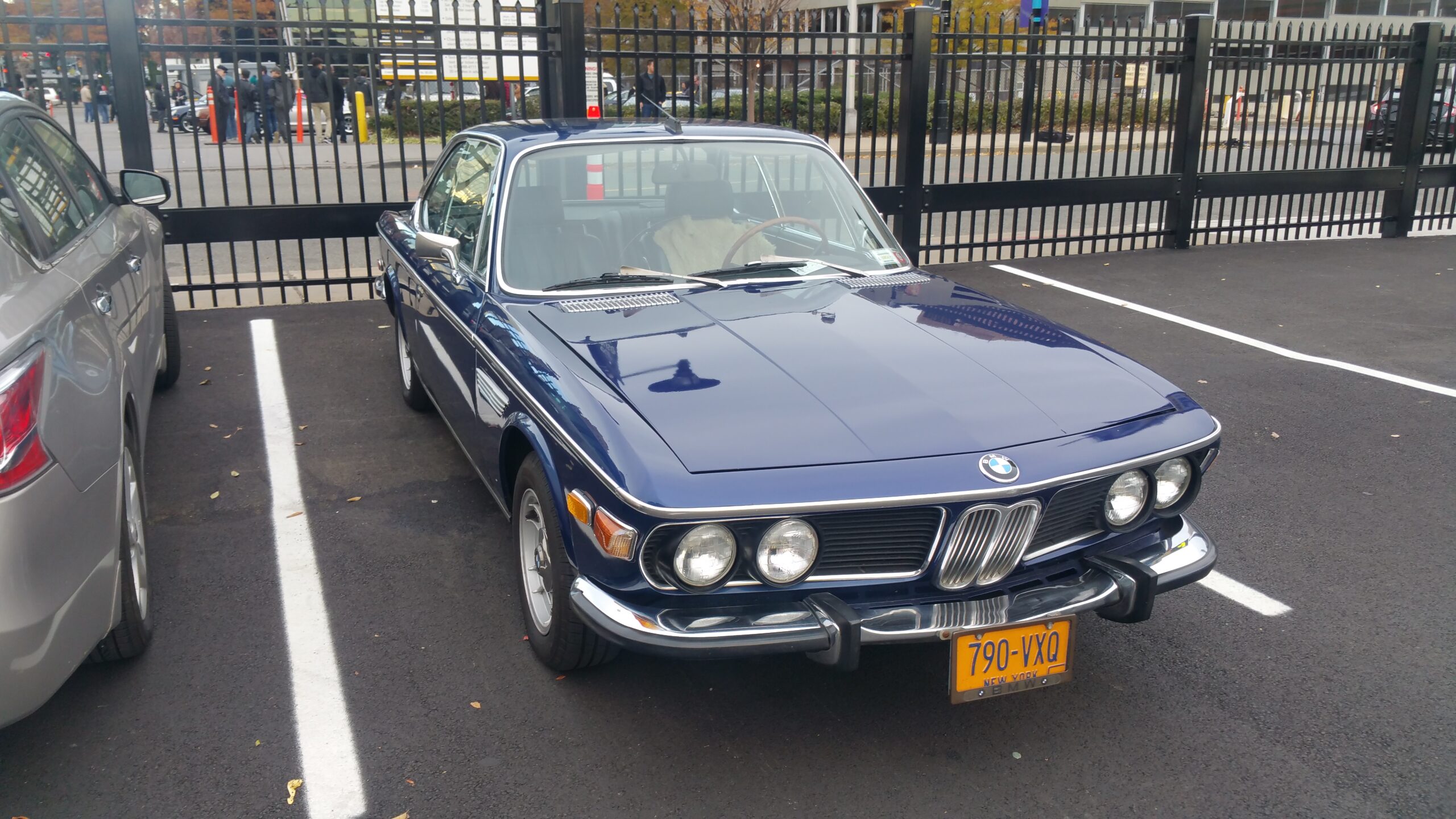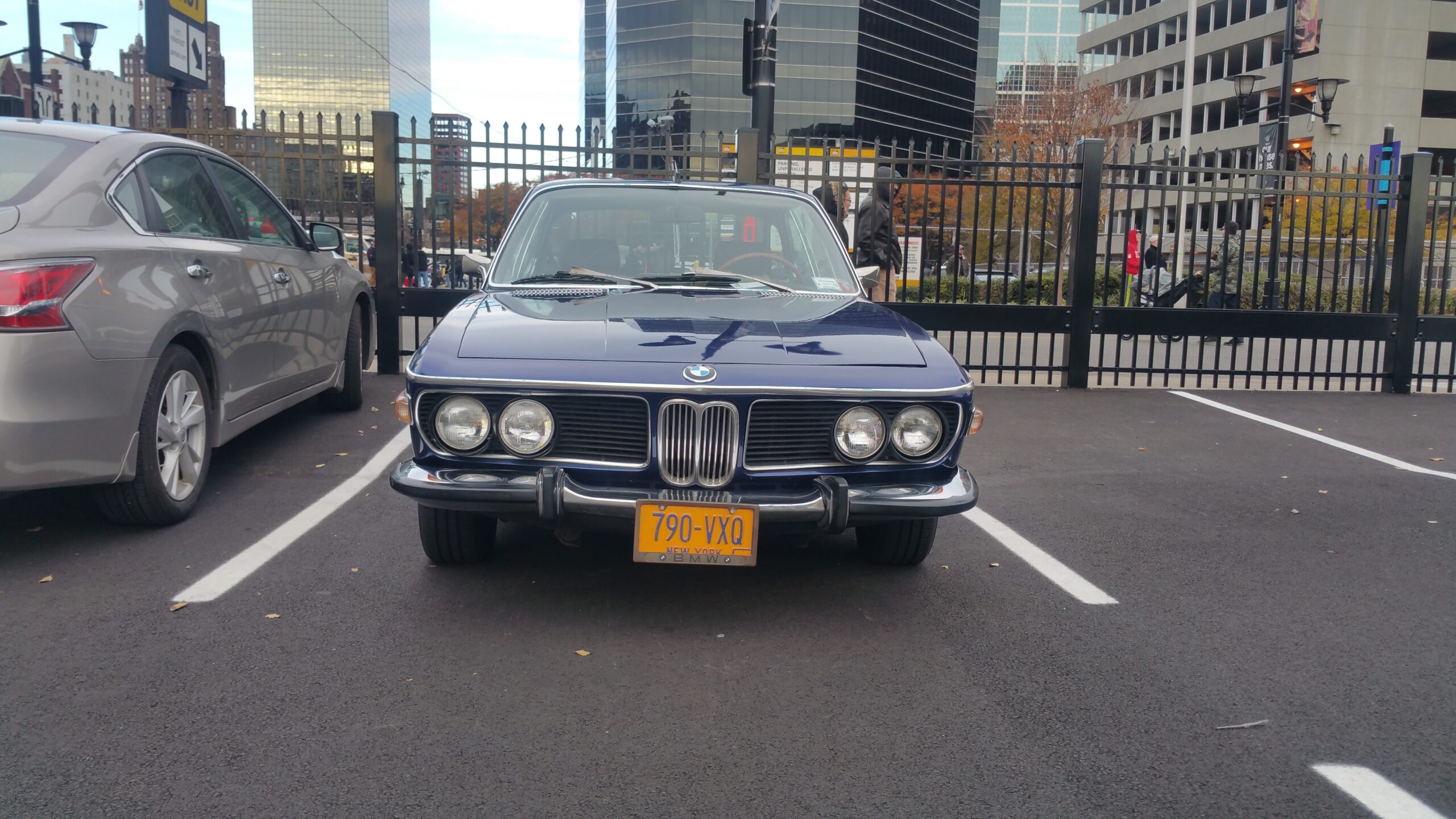BMW 2800CS Why Everyone Should Drive This Car At Least Once
In my last post, I wrote about the cars at the Jalopnik Hurricane Relief Car Show that I thought were the most awesome and the most significant. This post is the beginning of a series where I dive deep into all of those car’s histories and features to explain why I think they are amazing.
Starting off with the BMW 2800 CS.

The 2800 CS was made between 1968 and 1971. In 1972 BMW started making the 3.0CS which were heavier and less powerful and not the subject of this article. However, for due diligence purposes, I will add the that 3.0CS did have the racing pedigree as removing sound deadening materials and a few other features made that car light enough to race.
These cars came about because in the 1950’s BMW was focused on making expensive cars like the 507 which was awesome but an expensive roadster. BMW was also making the Isetta microcar which was underpowered but was utilizing engineering coolness. However, for the mid-market, there were no models sold and this started to reflect on BMW’s bottom line. Bad for BMW but good for everyone else.
So if you’re BMW and you have identified a gap in your target market, what do you do? Do you engage expert engineers and use carefully combed statistical data to find opportunities for new product features? Or? Do you just got the parts bin and shake it until you get a car out of it that you can sell?
Yup, they did the ladder. So GM and Ford aren’t the only ones. Realistically, the results were outstanding. Just look.

Everything from the lights to the wheels to the windows is well thought out.

For a 1971 automobile, the interior is superbly functional and all the knobs and buttons look substantial. Well done indeed.
So where did the 2800 CS come from? Apparently, someone looked at a 2000 CS which started production in 1965 (and was succeed by the 2800 CS) and said well if we stretch it and add power. I imagine no one disagreed with more power, but the delivery was innovative for the time. The 2800 CS had a 6 cylinder 2.8 liter inline 6 cylinder engine making 170 horsepower. BMW used the triple hemispherical combustion chambers and twin carburetors. So yeah, if you have this car you can say it’s a HEMI. The engine was mated to a 4-speed manual or an optional 3-speed automatic transmission. That’s right, the automatic was optional, this was presented as a real GT car, meant for grand touring not running groceries around town. The car cost $10,000 when it was new. The average salary in the US in 1971 was just shy of $7,000 so this was not a cheap car but not overly expensive either.
In today’s market, a concourse quality restoration is valued around $ 38,000, while an excellent quality restoration is valued around $23,000 according to Hagerty. So not a cheap collector vehicle but never the less one without a prohibitive entry fee and not to mention this is a car that could be driven often if not daily so the price may be worth it for those who appreciate the car’s styling and heritage.
So if your looking for a collectible or old car to drive around town that will turn heads, look into the BMW 2800 CS, it may just be what you fancy.
References:
https://www.hagerty.com/apps/valuationtools/1969-bmw-2800cs
https://en.wikipedia.org/wiki/BMW_E9
https://www.conceptcarz.com/vehicle/z16992/BMW-2800.aspx




